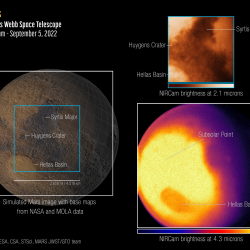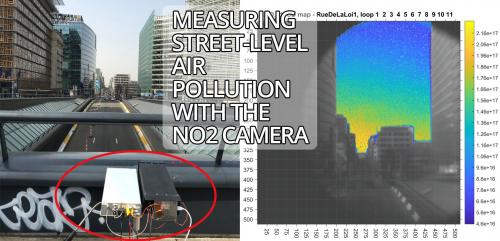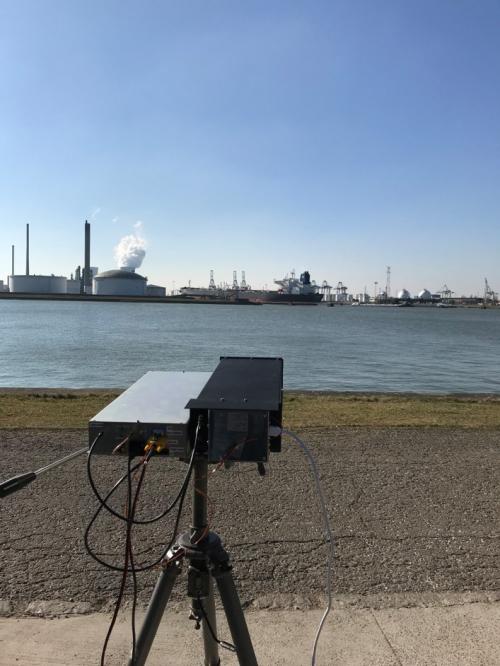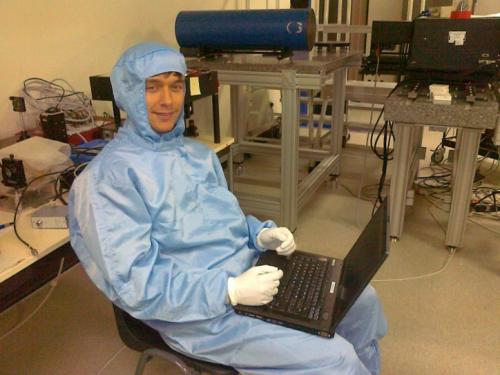Each day, we get up and try to live our best lives. Besides going to work and making time for our family and friends, we also have to make efforts to keep our bodies and minds healthy. Unfortunately, there is one factor which affects our health, but which we have little control over as an individual: air pollution. The United Nations Environment Programme has chosen September 7 to be the International Day of Clean Air for Blue Skies in order to emphasise the need to tackle this specific global problem, which costs 7 million human lives per year.
Among other species, NO and NO2 molecules are released by combustion processes, the latter being a known cause of respiratory problems. At BIRA-IASB, our scientists and engineers have spent several years developing and refining a portable instrument, the NO2 camera, to help us tackle the issue.
Causes and effects of nitrogen dioxide pollution
In Belgium, urban and industrial areas are no strangers to air pollutants like sulphur dioxide (SO2), ground-level ozone (O3), particulate matter (PM) and nitrogen dioxide (NO2). At BIRA-IASB, our scientists and engineers have been working several years on developing and refining an instrument with the capability to not only measure NO2, but also to visualize its distribution above urban areas, or in exhaust gases.
NO2 is a highly reactive, invisible gas, which is produced when fuel is burned, either for transportation, industrial or heating purposes. Breathing air with high concentrations of NO2 can irritate our airways. This can aggravate existing respiratory diseases, and can contribute to the development of respiratory issues or infections after a long exposure.
On top of that, NO2 reacts with other chemicals in the air to form both particulate matter and ground-level ozone, which are even more harmful to our health. It can yield acid rain, damaging crops and ecosystems. Lastly, it enhances the concentration of nitrogen both in the air and in the water, which can disrupt marine ecosystems.
The invisible made visible
NO2 abundance has measured from space for a long time already. However, while earth observation satellites provide global maps of pollution, the achieved spatial resolution (the amount of pixels, and thus of detail, in one image) barely captures city-scale emissions. On the other hand, air quality stations on the ground return localised measurements which may not very well capture the pollution, for instance at the next intersection or one street further. They cannot cover much area. We are thus lacking an instrument capable to fill in that gap between the large-scale and small-scale measurements, an instrument that can resolve the local pollution with a high spatial resolution.
This is why the NO2 camera was developed. With this instrument, we are able to perform measurement campaigns anywhere with a clear field of view: at the bustling port of Antwerp, on a city rooftop, or on the Rue de la Loi at the heart of Brussels! The camera also allows us to measure nitrogen pollution in different situations: it is very good at monitoring both a dynamic single emission of pollution (like an industrial plume) and the general ambient concentration over a large area (like the city skyline).
Where did you come from and where will you go?
 The idea for the NO2 camera is based on a similar instrument for the ALTIUS mission, a satellite mission initiated by BIRA-IASB and scheduled for launch in 2025 as part of ESA’s Earth Watch programme. Once operational, ALTIUS will be able to combine several different observation techniques (measurement geometries) in order to monitor Earth’s atmosphere, even when it is on the night side of the planet (when classic observation methods fail due to lack of sunlight to perform spectral measurements). It will monitor stratospheric ozone (our protective ozone layer) as well as other species like NO2, NO3, water vapour, aerosols and more. New missions like these are necessary to monitor the recovery trend of the ozone layer.
The idea for the NO2 camera is based on a similar instrument for the ALTIUS mission, a satellite mission initiated by BIRA-IASB and scheduled for launch in 2025 as part of ESA’s Earth Watch programme. Once operational, ALTIUS will be able to combine several different observation techniques (measurement geometries) in order to monitor Earth’s atmosphere, even when it is on the night side of the planet (when classic observation methods fail due to lack of sunlight to perform spectral measurements). It will monitor stratospheric ozone (our protective ozone layer) as well as other species like NO2, NO3, water vapour, aerosols and more. New missions like these are necessary to monitor the recovery trend of the ozone layer.
The instrumental concept relies on the solar light scattered air molecules into the field of view of the instrument. Along the light path, absorption by various molecules happens with variable strength as a function of the wavelength (the color of the light). NO2, for example, absorbs mainly in the blue, while O3 absorbs mainly in the ultraviolet (UV), and a little in the red. By recognizing the characteristic signature of the molecule in the recorded light, one can determine the abundance of the gas in the light path.

Turceni, Romania.
While working on a prototype of ALTIUS, researcher Emmanuel Dekemper noticed the potential for a ground-based instrument. The idea was first tested by taking the prototype out of the laboratory for a measurement campaign at one of the most polluting power plant of Europe, in Romania. Together with colleagues Jurgen Vanhamel, and Bert Van Opstal, the prototype was operated, and yielded unprecedent results: the NO2 field in the plume could be observed like never before.
The successful measurements triggered a round of optimizations. Improvements concerned every aspect: reduction of size, mass, and power consumption, increase of frame rate, better control software, more performing data processing algorithms and more…
The new instrument was tested from our Institute’s rooftop, where a clear view towards the center of Brussels is offered. For the first time, the pollution above Belgium’s capital could be mapped, and measured with a very high spatial resolution.

maps].
Early this year, another test was carried out, this time from inside the city, in the European district. The NO2 camera was installed nearby the Schumann roundabout and the Berlaymont building, and pointed at the Rue de la Loi. This location offered an opportunity to look at the pollution above one of the most congested boulevards of Brussels.
Another advantage of the spot is that the view is blocked by a large, white building, 1600m away down the boulevard. For an optical instrument like the NO2 camera, this is an interesting configuration, as the light path is bounded.

A funny thing is that some of the European district buildings (like the “Lex” building) are so reflective that NO2 measurements could even be performed from the light reflected on their windows.

While the camera has already come a long way since its conception, many possibilities remain open for development. Concrete applications include using the BIRA-IASB technology to monitor the nitrogen dioxide emissions of ships that pass through the busy channel by the Belgian coast, to perform street-level, or even airborne measurement campaigns with drones or HAPS drones (High Altitude Pseudo Satellite), and to realise a ground-based tomography of urban pollution.




